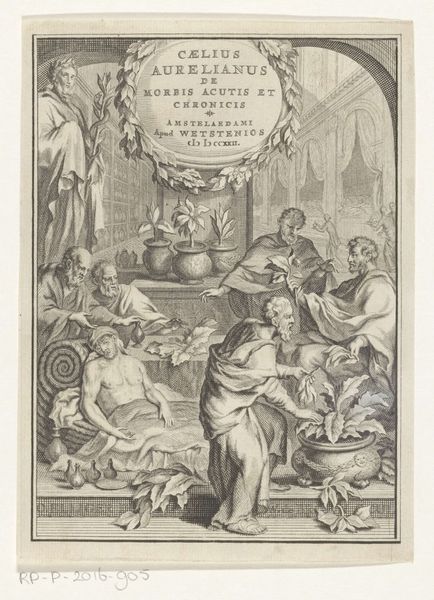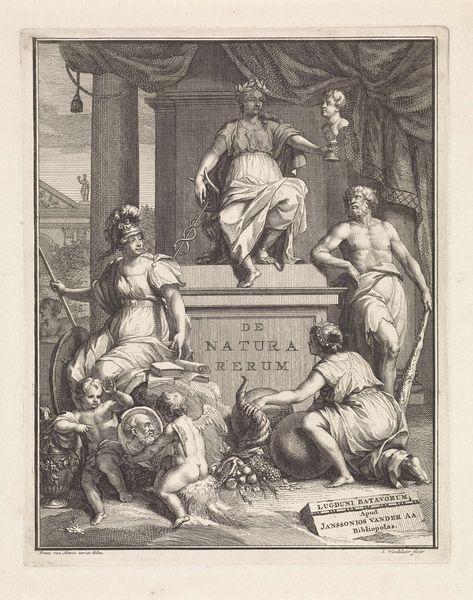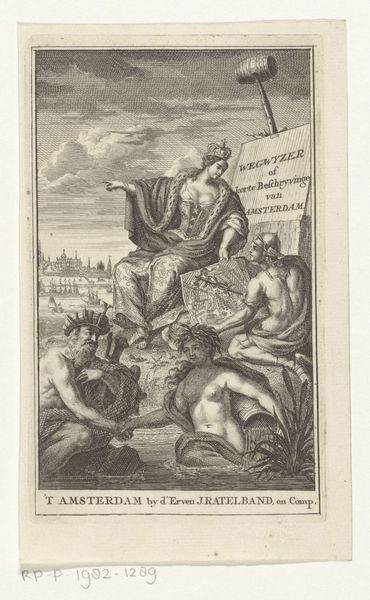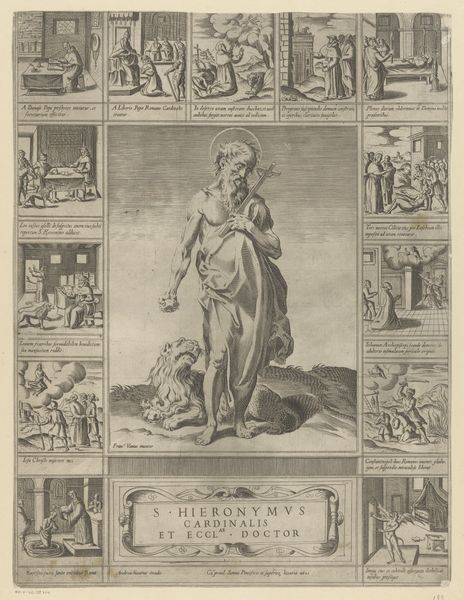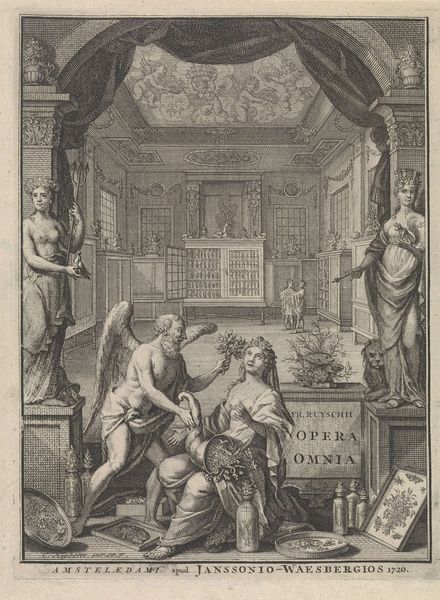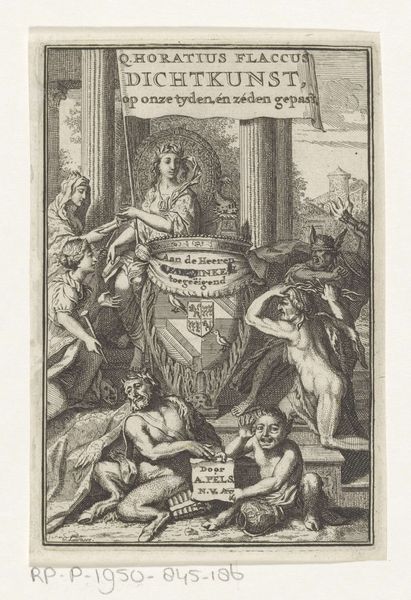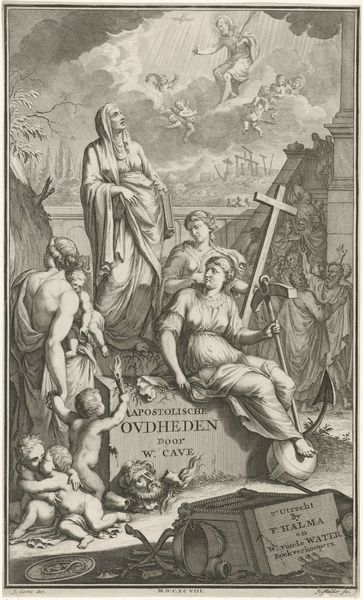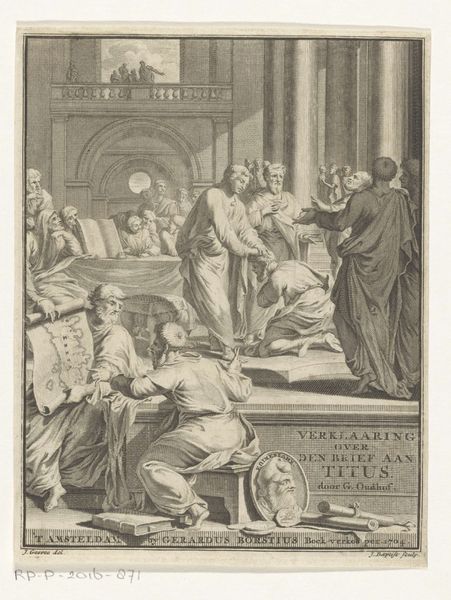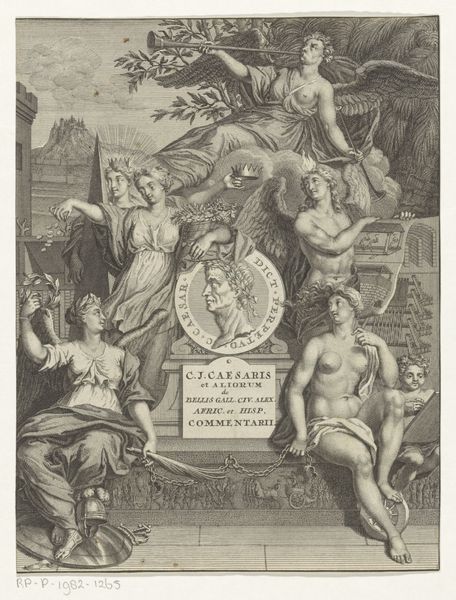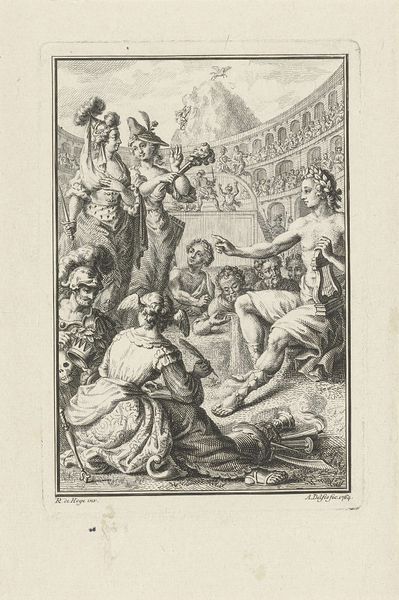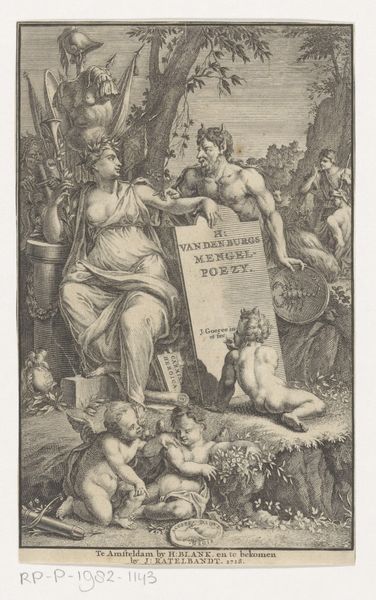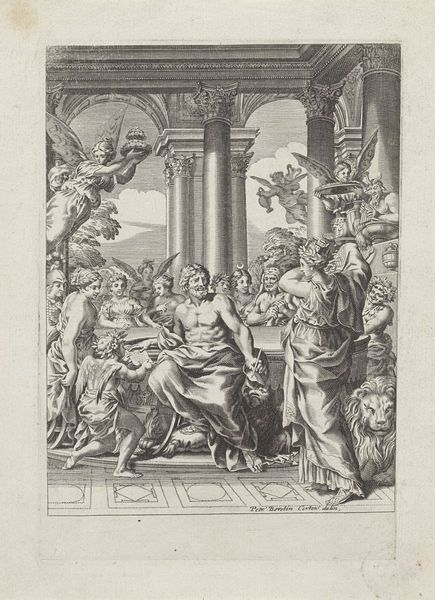
Titelprent voor portefeuille 22 van de Atlas Ottens (Amsterdam, deel 3: Stadhuis op de Dam, beelden e.a.) Possibly 1717 - 1772
0:00
0:00
jacobfolkema
Rijksmuseum
print, engraving
#
allegory
#
baroque
#
pen drawing
# print
#
pen illustration
#
pen sketch
#
old engraving style
#
cityscape
#
history-painting
#
engraving
Dimensions: height 465 mm, width 288 mm
Copyright: Rijks Museum: Open Domain
Editor: So, this is Jacob Folkema’s "Titelprent voor portefeuille 22 van de Atlas Ottens," dating from somewhere between 1717 and 1772. It's currently held at the Rijksmuseum and seems to be an engraving. It has this theatrical, almost overloaded feel to it with all the figures and symbols. What's your take on this, and how do you interpret this incredibly detailed image? Curator: It's certainly a dense image, isn't it? Look closer and we start to decipher the intended dialogue between power and representation in 18th century Amsterdam. The allegorical figures, drawn from classical mythology, aren't merely decorative. They’re actively constructing a narrative around Amsterdam’s self-image. Notice how the female figure at the center, perhaps representing the city itself, holds a globe, subtly emphasizing Amsterdam's global reach through trade and colonialism. What does it mean to see such a figure, rendered in the artistic conventions of the time, still gazing out at us now, from our changed sociopolitical landscape? Editor: So, you’re saying these figures weren't just aesthetic choices, but tools to project power? Curator: Exactly. The cityscape in the background, combined with the figures of Neptune and what seem to be land deities, highlights Amsterdam's dominion over both land and sea. Consider also the historical context: Amsterdam at this time was a major player on the world stage. But this image is carefully constructed to not only reflect that reality, but also to legitimize it. It’s vital to remember the role the Dutch played in colonialism and the exploitation of resources and people, it all becomes part of reading the picture. Does that perhaps shift your view of that initial, "overloaded" impression you felt? Editor: It definitely gives me a lot to think about. It's less a straightforward illustration and more of a calculated statement of power, draped in allegory. Thanks, I see it in a very different light now. Curator: Precisely, art offers complex statements and multiple readings; each rooted in unique times and contexts. And each time we view it, we should question whose perspective it privileges and whose voices are silenced.
Comments
No comments
Be the first to comment and join the conversation on the ultimate creative platform.
